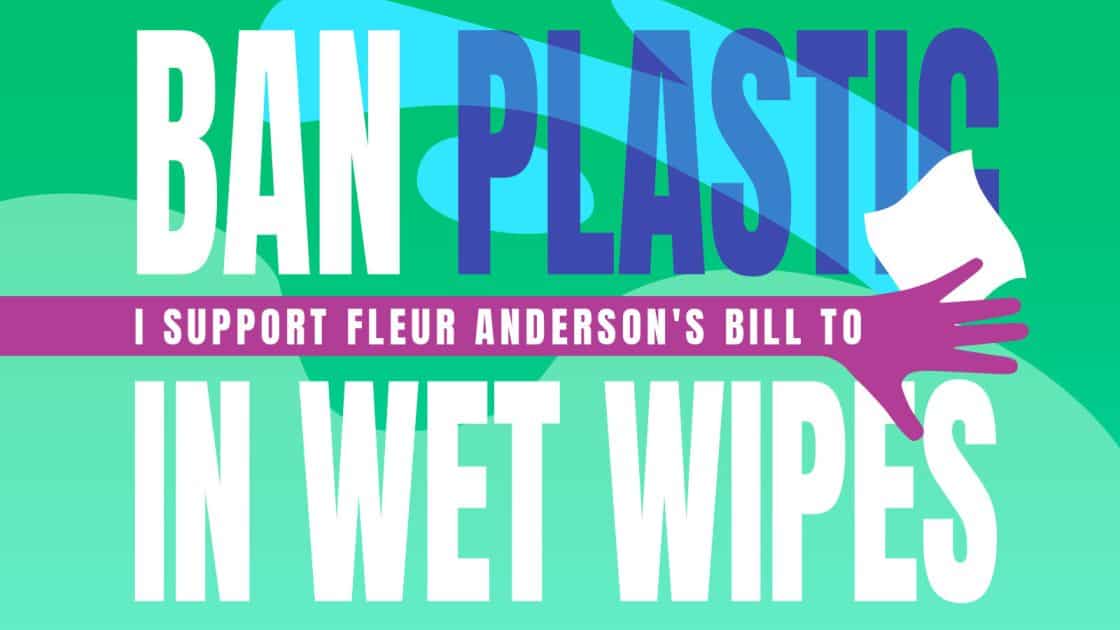1. Stricter Regulations on Biodegradability and Compostability
Governments and regulatory agencies are focusing more on lowering plastic pollution and encouraging sustainable practices as environmental concerns continue to grow. Wet wipes, which are frequently criticized for adding to the amount of garbage that ends up in landfills and the ocean, are now being closely examined. It is anticipated that future laws will require substantial modifications to the materials used in the production of wet wipes, with a particular focus on compostability and biodegradability.
The implementation of minimum biodegradability requirements, which will mandate that wet wipes decompose in a given amount of time in natural environments like soil or water, is one of the improvements that are expected to occur. This prevents used wipes from lingering in the environment and causing long-term contamination. It could be necessary for manufacturers to switch from conventional synthetic materials like polyester and polypropylene to natural fibers like cotton, bamboo, or materials derived from cellulose. Reevaluating material supply chains and re-engineering manufacturing processes will probably be necessary as a result of these changes.
Requirements for compostability as well as biodegradability are anticipated to increase. Products with the label “compostable” must fulfill strict certification requirements to guarantee that they break down in residential or commercial composting systems without releasing toxic chemicals. Wet wipes manufacturers now have an additional obligation to verify their materials through stringent testing. Additionally, these certificates will probably be linked to laws governing product labeling, assisting customers in making wise selections.
In addition to helping manufacturers adhere to rules, adjusting to these changes will help them sell their products as environmentally sensitive, which will appeal to an increasing number of eco-conscious consumers. Companies must work with suppliers of sustainable materials, make research and development investments, and keep a close eye on legislative changes to remain ahead of compliance requirements to satisfy these higher standards. By doing this, wet wipes manufacturers may transform regulatory obstacles into chances for creativity and unique selling points.
2. Enhanced Transparency in Ingredient Labeling
In the wet wipes sector, ingredient label transparency is quickly emerging as a key component of customer confidence and legal compliance. Regulatory agencies are anticipated to implement stricter standards for ingredient disclosure as customers become more aware of the goods they use and their possible effects on their health and the environment. These modifications seek to remove uncertainty and provide customers with the information they need to make wise decisions, especially when it comes to goods promoted for delicate uses like cleanliness, skincare, and infant care.
The necessity for obligatory disclosure of all chemicals, including active compounds, preservatives, perfumes, and surfactants, is one significant regulatory change that is expected to occur. For example, several wet wipes just mention the primary ingredients these days, sometimes leaving out specifics concerning possible allergies or irritants. Full openness will probably be required by future rules, which will force producers to declare all ingredients and their concentrations on product packaging or related documents. By lowering false claims, this action supports larger initiatives to protect consumer safety and advance fair trade practices.
Emphasizing allergy and irritant information is another feature of these improved standards. Any ingredients that might trigger allergic reactions must be explicitly listed on wet wipes meant for use on sensitive skin or by people with sensitivities. Regulatory agencies will probably scrutinize terms like “hypoallergenic” and “dermatologist-tested” more closely and demand scientific proof to back up these assertions. To stay competitive, businesses will be encouraged to use cleaner formulas with fewer chemicals and allergies.
Additionally, it is anticipated that eco-certificates and labeling requirements will grow, requiring manufacturers to reveal environmental sustainability certifications. Labels like “biodegradable,” “compostable,” or “organic” must adhere to globally accepted standards and be backed by substantiated certificates. With stricter sanctions for false or unsupported claims, commonly known as “greenwashing,” new rules would encourage more responsibility in marketing strategies.
Wet wipes manufacturers must make significant investments in thorough testing and documentation procedures to guarantee accuracy and compliance to get ready for these changes. Navigating the changing terrain will need cooperation with regulatory advisors and certifying agencies. Early adoption of consumer-friendly and transparent labeling techniques may also increase brand loyalty and establish businesses as industry leaders in moral and responsible manufacturing. Improved ingredient openness boosts customer confidence and complies with regulatory requirements, which eventually leads to long-term economic success.
3. Microplastics Bans and New Fiber Standards
Because microplastics hurt the environment, especially aquatic ecosystems, their usage in wet wipes has drawn increasing attention. Global regulatory agencies are working to outlaw microplastics in consumer goods, such as wet wipes, as knowledge of this problem grows. These prohibitions force wet wipes manufacturers to switch from conventional synthetic fibers to biodegradable and environmentally friendly substitutes as part of larger initiatives to reduce plastic pollution and advance sustainable materials.
Eliminating the usage of plastic-based fibers like polyester and polypropylene, which are frequently found in traditional wet wipes, is anticipated to be the main goal of microplastic bans. Despite being long-lasting and reasonably priced, these materials decompose into microplastics that damage animals and infiltrate food systems for millennia. The manufacture and distribution of wipes using these fibers may be strictly prohibited by regulations, which would cause a major change in the sourcing of raw materials and production methods.
New fiber composition guidelines that outline the permissible proportion of natural or biodegradable fibers in wet wipes are probably going to be developed in concert with these prohibitions. For example, governments may require items promoted as eco-friendly to include at least 90% biodegradable material. Natural fibers like wood pulp, bamboo, and cotton are set to become the industry norm, providing wet wipes manufacturers with a sustainable substitute that satisfies customer desire for more environmentally friendly goods.
To guarantee that biodegradable fibers fulfill customer demands for utility and durability, these new criteria may also address the technical performance of these materials. Because customers tend to equate natural fibers with lower strength or moisture retention, wet wipes manufacturers will need to reconcile environmental responsibility with product quality. Fiber technological advancements, such as sophisticated cellulose blends or hybrid composites, will be essential to achieving these two goals.
Wet wipes manufacturers must make research and development investments to find appropriate substitutes and modify their manufacturing methods in order to abide by fiber requirements and microplastic restrictions. Remaining competitive will need cooperation with biodegradable raw material providers and involvement in industry-wide sustainable development projects. Additionally, by positioning their switch to eco-friendly fibers as a demonstration of their dedication to environmental stewardship, businesses may use these legal obstacles as marketing opportunities.
For the wet wipes business, the move to outlaw microplastics and implement new fiber standards marks a revolutionary stage. Wet wipes manufacturers may meet legal requirements, lessen their environmental impact, and satisfy the rising number of environmentally concerned consumers by adopting these improvements. In addition to guaranteeing compliance, proactive adaptation will establish brands as pioneers in sustainable innovation.
4. Water Usage and Chemical Safety Regulations
Regulators are paying more attention to controlling water use and chemical safety in the wet wipes sector as sustainability and safety becomes more important in production processes. The necessity to lessen the impact on the environment and guarantee worker and customer safety is what motivates these actions. Stricter control over the chemicals used in wet wipe formulations and more environmentally friendly production methods are the goals of the proposed legislation.
Water use in wet wipes manufacturing processes is probably going to be a major regulatory concern. Water is used extensively in the manufacturing of wet wipes, both as a basic ingredient and throughout the cleaning and production stages. Wet wipes manufacturers may be required to use closed-loop systems that reduce water waste if future legislation imposes water recycling requirements. By allowing facilities to reuse and purify water in their operations, these technologies drastically lower total usage. Water-efficient systems are a wise investment for progressive wet wipes manufacturers as compliance with such regulations may be encouraged by tax breaks or subsidies.
More rigorous rules are anticipated for chemical safety in addition to water usage. The list of prohibited compounds may be expanded by new regulations, although current requirements frequently only cover a small number of potentially dangerous chemicals. Preservatives that have been connected to skin irritation and other health issues, such as parabens and methylisothiazolinone (MIT), may be subject to stricter regulations or even outright prohibition. Wet wipes manufacturers will need to prove that every ingredient in their wet wipes is non-toxic, non-irritating, and ecologically safe since regulators are expected to seek scientific confirmation of chemical safety.
Furthermore, the industrial environment itself may be subject to these rules. It may become necessary to conduct routine chemical safety audits to make sure that facilities adhere to environmental protection regulations and worker safety requirements. This might involve staff training programs to reduce the dangers connected with hazardous products, as well as the appropriate handling and storage of chemicals.
Wet wipes manufacturers will need to give chemical formulation innovation a priority to adjust to these developments. The use of gentler surfactants that preserve product performance while lowering health and environmental hazards, as well as natural and plant-derived preservatives, is anticipated to increase in the sector. Wet wipes manufacturers should investigate cutting-edge water utilization technologies like reverse osmosis and ultrafiltration systems to improve water recovery rates and lessen dependency on freshwater sources.
In addition to being a question of compliance, taking proactive measures to meet water and chemical safety standards offers a chance to show leadership in sustainability and customer care. Wet wipes manufacturers may increase consumer trust and obtain a competitive advantage in a market that is becoming more regulated by implementing safe chemical substitutes and environmentally responsible production techniques. These initiatives will support a more responsible and sustainable sector in addition to meeting regulatory requirements.
5. Circular Economy Initiatives
In several industries, including the production of wet wipes, the idea of a circular economy—which prioritizes resource efficiency, waste reduction, and recycling—is gaining support. To reduce the environmental effect of single-use items, governments and regulatory agencies are increasingly supporting circular economy projects. Future laws in this field are probably going to change the wet wipes market by promoting the creation of goods that are recyclable, reusable, and sustainably made.
Reducing waste by using reusable packaging is a major goal of these programs. Wet wipes’ conventional single-use packaging greatly increases pollution and landfill waste. Reusable packaging technologies, which enable customers to restock their supply of wet wipes without throwing away the container, may be encouraged or required by future legislation. Because of this change, producers would need to create robust, easy-to-use packaging that complies with legal requirements and customer convenience expectations.
The incorporation of recycling technologies is probably going to be a regulatory priority in addition to packaging. Because wet wipes are frequently made from a variety of components, recycling them is now quite difficult. Future rules could encourage the creation of recyclable mono-material wipes as well as improved infrastructure for trash collection and processing. Extended producer responsibility (EPR) policies, which oblige wet wipes manufacturers to return used goods or support recycling initiatives, may be implemented by some governments.
Designing items for end-of-life biodegradability or recycling is another aspect of circular economy projects. In order to guarantee that their goods decompose organically or can be efficiently recycled at the end of their lifespan, wet wipes makers will need to implement cutting-edge materials and technology. This might involve using water-dispersible materials that can safely break down in sewage systems or biodegradable fibers.
Reusing manufacturing waste is also covered under the circular economy’s tenets. Wet wipes manufacturers may be encouraged to adopt zero-waste practices in their manufacturing facilities by future rules. Offcuts and rejected materials from the production of wet wipes, for example, may be recycled into biodegradable fillers or insulating materials, which would reduce waste production and total resource consumption.
Wet wipes manufacturers must invest in sustainable materials, rethink product and package designs, and work with recycling and waste management groups to get ready for these changes. Early adopters of circular economy ideas will establish themselves as leaders in sustainable innovation in addition to adhering to future requirements. Wet wipes manufacturers can develop a business strategy that is robust to environmental and economic factors by responding to consumer requests for eco-friendly practices and minimizing dependency on limited resources.
Adopting circular economy initiatives is important for the wet wipes industry’s sustainability, not merely to comply with regulations. Wet wipes manufacturers may set the path for long-term success and environmental responsibility by turning trash into resources and emphasizing sustainability.
6. Global Harmonization of Standards
The regulatory environment in which the wet wipes sector works is quite varied, with regional norms differing greatly. Although this has made it possible for wet wipes manufacturers to customize their goods for certain markets, it also poses problems for international commerce, manufacturing efficiency, and compliance. In light of these difficulties, attempts to standardize international standards are accelerating due to the demands of consumer safety, sustainability, and uniformity. It is anticipated that future rules will concentrate on developing uniform standards that improve international trade and expedite production.
Consistency in product criteria, especially with regard to material composition, biodegradability, and safety, is one of the main advantages of global standardization. For example, a single, internationally accepted standard for biodegradable wet wipes may do away with the necessity for wet wipes manufacturers to modify their formulas to satisfy various local requirements. In addition to making compliance easier, this would shorten time-to-market and lower production costs, allowing wet wipes manufacturers to expand their businesses more effectively.
Labeling and certificates are another important component of harmonization. At the moment, certifications like “eco-friendly” and “compostable” differ greatly by location, with each having its standards and procedures for verification. Future international standards may standardize these certifications, guaranteeing that a product with a biodegradable label in one nation satisfies the same requirements everywhere. Customers would get reliable information on product quality and environmental effects no matter where they are, which would increase customer trust.
Health and safety regulations will probably be covered by harmonization efforts as well, especially for goods used in delicate applications like hygiene or newborn care. In addition to helping wet wipes manufacturers maintain product quality, unified criteria on acceptable chemical composition, allergy labeling, and microbiological safety would make it easier for them to comply with several national requirements. A regionally uniform limit on preservatives or perfumes, for instance, may make the procurement and formulation of ingredients easier.
Global standards will not only help wet wipes manufacturers but also make it easier to enter other markets and commerce. By guaranteeing that goods that satisfy criteria in one area are immediately accepted in another, harmonized rules lower trade obstacles. Small and medium-sized firms hoping to enter international markets without having to deal with difficult and expensive compliance procedures for every target nation may find this to be very helpful.
Global harmonization, however, comes with its own set of difficulties. Governments, business stakeholders, and international organizations must work together to align disparate regulatory regimes. These initiatives may be hampered by regional variations in consumer expectations, environmental concerns, and economic circumstances. However, the long-term advantages of uniform standards—in terms of efficiency, safety, and sustainability—make it worthwhile to work toward.
Wet wipes manufacturers should keep up with current debates and take part in industry forums and working groups that are establishing international standards in order to be ready for these developments. Businesses may also better align with new rules by investing in flexible manufacturing technology and strong compliance processes. Wet wipes manufacturers may establish themselves as market leaders in a globally networked market by adopting harmonization and providing goods that satisfy consumers’ expectations for sustainability, safety, and quality.
A revolutionary change for the wet wipes business, global standardization promotes efficiency, lowers complexity, and creates new development prospects. Wet wipes manufacturers may successfully negotiate the changing regulatory environment by proactively keeping up with these advancements.
7. Antibacterial Claims and Health Guidelines
Demand for antibacterial and disinfecting wet wipes has skyrocketed, particularly in the wake of global health emergencies, raising questions about the claims made by product manufacturers. To make sure that such statements are not deceptive and are supported by science, regulatory agencies are strengthening health guidelines. To safeguard customers and improve product credibility, future laws are anticipated to establish more stringent standards for ingredient safety, antibacterial efficacy, and product labeling.
The necessity for scientific confirmation of antibacterial claims is one of the major developments that are expected to occur. To demonstrate that their products efficiently kill or limit the growth of bacteria and viruses as stated, wet wipes manufacturers will need to carry out stringent testing, such as clinical trials or laboratory investigations. A claim that a wet wipe kills “99.9% of germs,” for example, will probably need to be supported by certain testing procedures that have been authorized by regulatory agencies. By preventing inflated or baseless promises, this action seeks to increase customer confidence in promoted goods.
Regulations will emphasize the safe use of antibacterial wipes’ active components in addition to confirming their effectiveness. Common disinfectant wipe ingredients including triclosan, ethanol, and benzalkonium chloride have been closely examined for possible health and environmental hazards. Future regulations may restrict these drugs’ concentrations, compel the use of safer substitutes, or call for unambiguous labeling informing consumers of possible hazards and appropriate usage. Wet wipes made for surfaces, for instance, would need to include warnings stating that they are not meant for skin contact.
Additionally, the application-specific labeling of antibacterial wipes may be covered by new health recommendations. Products must make a clear distinction between those meant for medical settings, domestic cleaning, and hand hygiene. To guarantee they are safe for frequent skin contact, wipes intended for personal use, for instance, would need to adhere to strict dermatological requirements. Similar to this, medical-grade disinfectant wipes could have to adhere to infection control guidelines that outline how well they work against infections linked to healthcare.
Regulations may also require antibacterial wipes to have an expiration date. Wet wipes manufacturers must test their goods and include correct shelf-life information on the label since active compounds may lose their effectiveness over time. This will guarantee that customers are using safe and effective items, even after prolonged storage.
Wet wipes manufacturers need to make research and development a top priority in order to get ready for these changes. They should concentrate on developing novel formulations that strike a balance between safety and efficacy. It will be essential to work with accredited labs to verify statements and improve testing procedures. Additionally, businesses may stand out in a competitive market by coordinating their marketing tactics with clear, evidence-based messaging.
Stricter antibacterial and health regulations that are proactively adopted not only guarantee regulatory compliance but also establish wet wipes manufacturers as trustworthy and accountable companies. Businesses may maintain their competitive edge in a market that is becoming more and more competitive by satisfying the growing need for safe and effective products. In the face of changing legislation, these initiatives will be crucial to preserving both market relevance and customer loyalty.
8. Digital Compliance and Traceability
The production of wet wipes is now changing as a result of the digital revolution that is sweeping through sectors. Regulatory organizations are urging more compliance and traceability through digital solutions. Wet wipes manufacturers are anticipated to be required by future legislation to implement cutting-edge technology for product transparency, reporting, and monitoring. Enhancing responsibility, enhancing product safety, and promoting trust between regulators and customers are the goals of these modifications.
The expected need for real-time traceability solutions is one significant change. Governments and certifying organizations may require firms to put in place digital systems that can follow each step of the production process, from acquiring raw materials to the finished product. Wet wipes manufacturers may be required to keep digital records that include information on the production circumstances, chemical additives used, and fiber origins. This degree of traceability guarantees that each part satisfies legal requirements and offers an auditable record in the event of recalls or quality issues.
In the wet wipes sector, QR code labeling is also anticipated to emerge as a key component of digital compliance. Customers and authorities may obtain detailed information about the goods, such as the composition of its ingredients, environmental certifications, manufacture date, and even the factory of origin, by scanning a QR code on the product package. In addition to boosting customer trust, this transparency makes it possible for authorities to swiftly confirm adherence to safety and environmental regulations.
Wet wipes manufacturers may potentially be required by future rules to provide regulatory bodies with digital compliance reports. Data on energy, water, emissions, and waste management during the production process may be included in these reports. This data may be collected automatically with the use of sophisticated sensors and monitoring technologies, guaranteeing accuracy and lowering administrative workloads. Regulatory agencies would be able to monitor compliance in real time and proactively spot any problems with regular digital filings.
Supply chain optimization is further supported by the use of digital compliance and traceability technologies. Wet wipes manufacturers may discover inefficiencies, enhance resource allocation, and obtain insights into their wet wipes manufacturing processes by utilizing Internet of Things (IoT) sensors and big data analytics. For example, real-time raw material inventory tracking guarantees prompt purchase, cutting down on waste and delays.
Wet wipes manufacturers should make investments in digital infrastructure, such as data management software platforms, Internet of Things (IoT) monitoring devices, and staff training initiatives, to get ready for these developments. Companies can create systems that satisfy present and future regulations by working with regulatory experts and technology vendors.
Adopting digital compliance and traceability improves operational effectiveness and brand reputation in addition to guaranteeing compliance with changing rules. Wet wipes manufacturers may set industry norms, gain customer trust, and gain a competitive edge in a market that is becoming more open by using these technologies early. The wet wipes sector has a revolutionary chance to adapt and prosper in a controlled, technologically advanced future thanks to this digital transformation.









